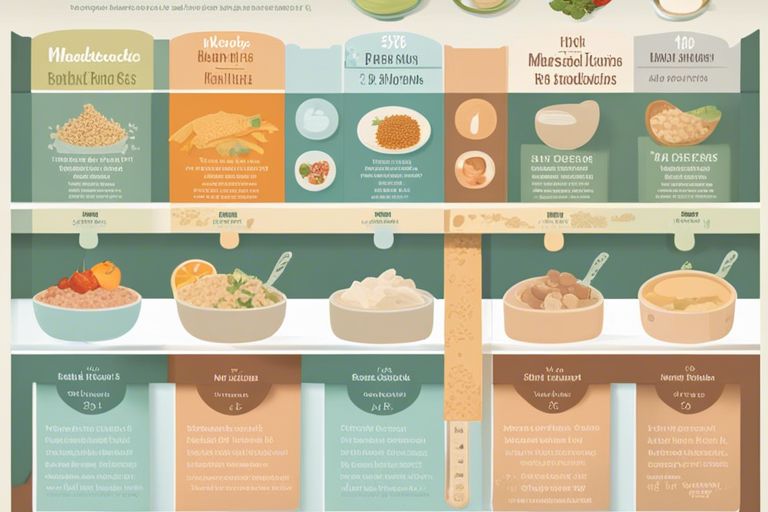tips, tricks and guides for parenthood
Most parents look forward to the exciting milestone of introducing solid foods to their babies, but it can be a daunting process to navigate. Understanding the texture timeline for transitioning from purees to more solid foods is crucial for ensuring a positive and safe experience for your little one. From mushy purees to soft finger foods and eventually to more challenging textures, each stage plays a vital role in your baby's development. Let's explore this important journey together!

Clearly, starting your baby on solid foods is a significant milestone in their development. If you're looking for a comprehensive guide on introducing solids to your little one, check out the 2024 guide for introducing solids to baby.
One important factor to consider when deciding when to introduce purees to your baby is their readiness. Typically, babies are ready for purees around 6 months of age, when they start showing interest in food, can sit up with support, and have lost their tongue-thrust reflex.
First, when starting with purees, it's necessary to choose ingredients that are easy to digest and less likely to trigger allergies. Common beginner puree ingredients include single fruits like apple, pear, or banana, and vegetables such as sweet potato, carrot, and butternut squash.
To ensure your baby gets the necessary nutrients, you can introduce one new ingredient at a time and observe for any signs of allergies or intolerances. It's also beneficial to steam or boil the ingredients for easy mashing and digestion.
Some babies may start showing signs that they are ready for thicker textures. These signs could include sitting up with support, showing interest in what you are eating, or trying to grab food from your plate. It's important to observe these cues before moving on to thicker textures.
On the journey to introducing thicker textures, mashed foods can be a great intermediate step. Start by mashing softer foods such as well-cooked vegetables or fruits. You can also add a little breast milk or formula to make the texture smoother and easier for your baby to swallow.
To ease the transition to mashed foods, gradually increase the thickness as your baby gets more accustomed to the new texture. Be cautious of any signs of choking or gagging, and always supervise your baby during feeding time. Be mindful of, every baby is different, so go at a pace that is comfortable for your little one.
Despite the new textures and shapes, introducing finger foods can be an exciting stage in your baby's solid food journey. It's vital to choose foods that are not only safe but also nutritious to support their growth and development. Opt for soft fruits like bananas or avocado, cooked vegetables such as carrots or potatoes, or small pieces of pasta or rice cakes.
Any parent knows that encouraging self-feeding can be a messy but rewarding experience. Try to provide suitable utensils and plates for your little one to explore. Offer a variety of finger foods in different shapes and colours to keep them interested and engaged. Recognising their independence is key in this learning process. Here are some tips to make the journey smoother:
A key to successful self-feeding is allowing your baby to explore and learn through trial and error. Offering a positive and encouraging environment will help them develop their hand-eye coordination and build confidence in their feeding abilities. Recognising their efforts, no matter how small, will go a long way in fostering their independence.
Keep the momentum going by slowly integrating your baby into your family meals. Start by offering small portions of soft and easily chewable foods that the rest of the family is having. Encourage your little one to mimic your eating habits and try a variety of flavours. This will help them transition from purees to solid foods seamlessly.
With growing bodies, it's vital to ensure your little one is getting a balanced diet. Include a variety of fruits, vegetables, whole grains, proteins, and healthy fats in their meals. This will provide them with the nutrients they need for proper growth and development.
Final tip: Don't forget to monitor your baby's iron intake, as it is crucial for their brain development. Incorporating iron-rich foods like lean meats, beans, lentils, and iron-fortified cereals can help meet their daily requirements.
With these considerations in mind, Texture Timeline - A Baby's Journey to Solid Foods provides a comprehensive guide for parents introducing their little ones to solid foods. From purees to soft lumps and finally to family meals, this timeline aims to support parents in navigating the exciting but sometimes daunting world of weaning. By focusing on the importance of texture progression and encouraging a positive eating environment, this resource equips parents with the knowledge and confidence to help their babies develop healthy eating habits from the start. Cheers to happy mealtimes and a lifetime of good food choices!
A: Texture Timeline - A Baby's Journey to Solid Foods is a comprehensive guide that helps parents navigate the introduction of solid foods to their baby, focusing on different textures at various stages of development.
A: Following a texture timeline ensures that babies are introduced to a variety of textures gradually, which helps in developing their sensory skills, oral motor skills, and reduces the risk of choking.
A: You can use Texture Timeline by following the recommended guidelines for introducing different textures to your baby at the appropriate stages of their development, making the weaning process smoother and more enjoyable for both you and your baby.
A: By following a texture timeline, you can help your baby develop a healthy relationship with food, explore different tastes and textures, and reduce the chances of developing feeding difficulties in the future.
A: You can find more information about Texture Timeline - A Baby's Journey to Solid Foods on our website, where you can access additional resources, tips, and support to help you through your baby's weaning journey.